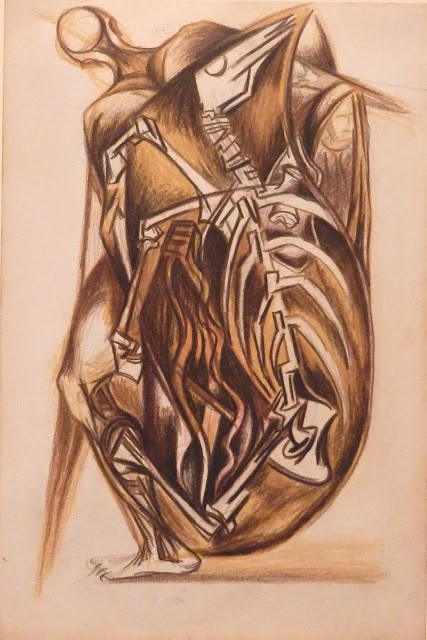And it was by....
Here's the second.
And it's by...
And lastly - and you may be detecting a theme here - this drawing...
...is by...
Yes, Jack the Dripper himself, the man whom you wouldn't wish to invite round to your house if you had an open fireplace (ask Peggy Guggenheim), and the artist who went on to paint this, which hangs in the Met next to these drawings and is considered his masterpiece.
What I'm showing you here is that an artist does not immediately arrive at the technique or way of expressing themselves for which they are best known. The drawings are shown in chronological order, and Pollock used them as a way of developing technique, exploring the language of art, getting to know how other artists have worked and observed natural forms, movement, the body, what it is to abstract.
In other words, there is a huge body of work behind every artist, of learning and understanding and experimenting, of observations and coincidences, of making mistakes and building upon them. This is work that isn't necessarily seen, but is vital to an artist in understanding themselves and their art. Without it, they couldn't learn and grow, nor could they create what they ultimately feel best expresses themselves.
Pollock eventually arrived at his giant works of abstract expressionism through a whole host of influences, including childhood walks in the wilderness with his father, and seeing American Indian sand painters and Mexican muralists, which saw him moving away from painting with brushes and pencils on easels, to working on the floor with organic matter such as sticks, sand and even broken glass. Which is about as far away from the Renaissance masters as you can get. However, I guess what he took away from his earlier study of work by Michelangelo and so on, is the organic rhythm that they have within their compositions. Just take a look below at Leonardo's studies of water turbulence, for example. Then look at the organic rhythmical lines of Pollock.
To know your own art, therefore, you need to understand the art of others. And the most important thing my tutor at art school ever told me was 'Look'.
Read more about Jackson Pollock in this interesting Guardian article HERE.

















































